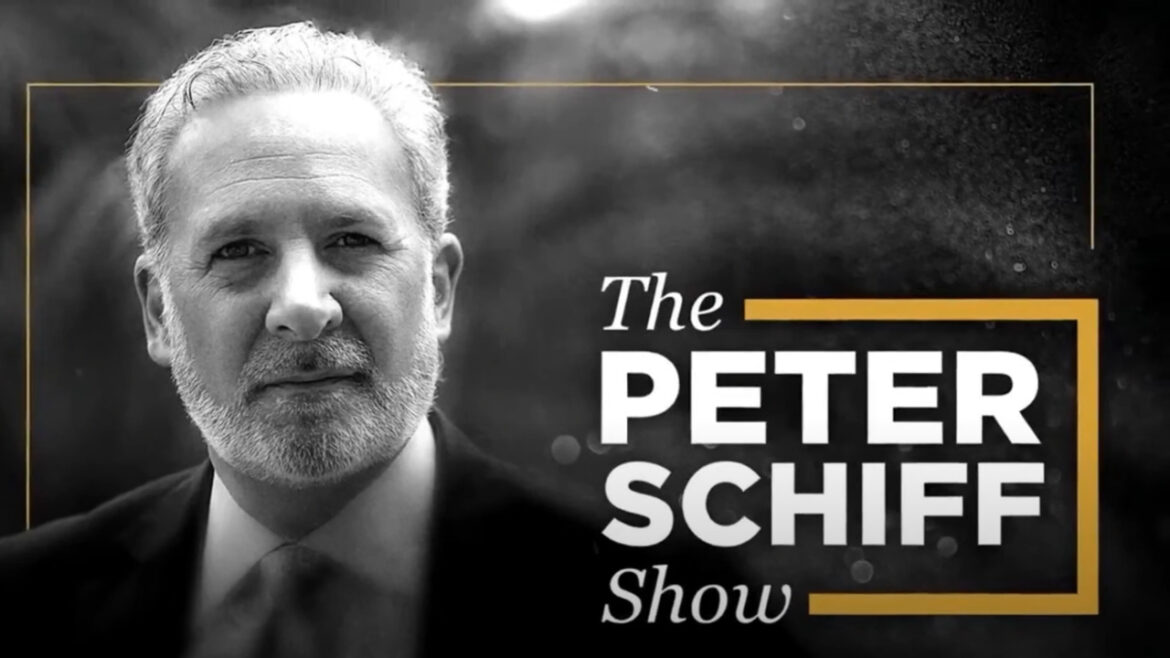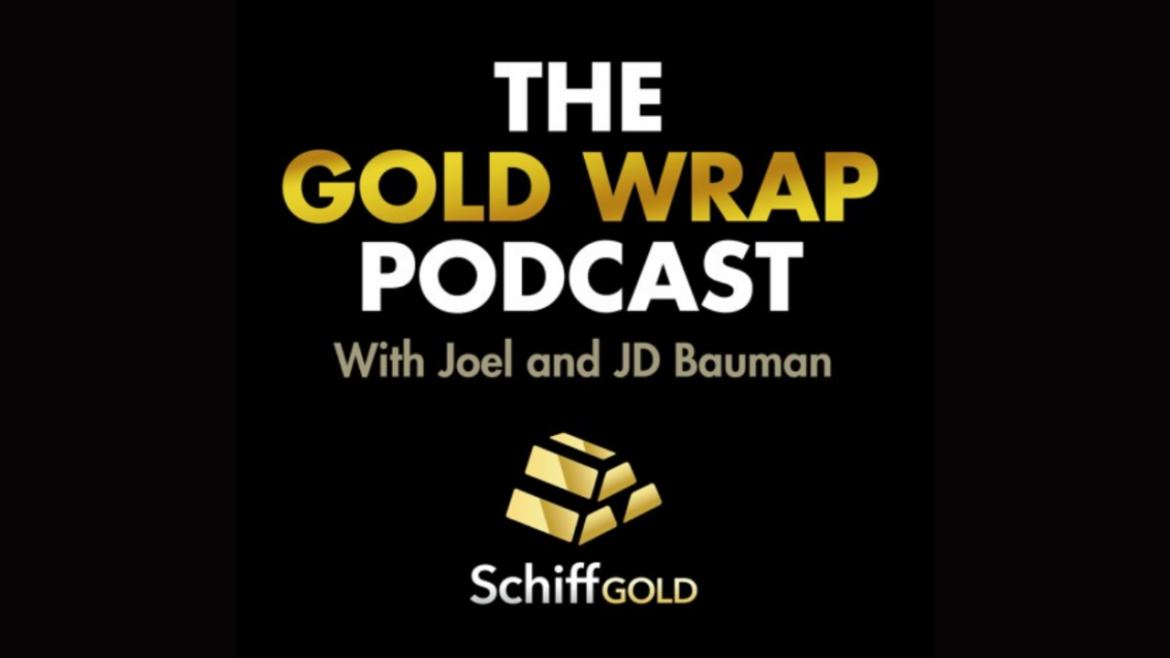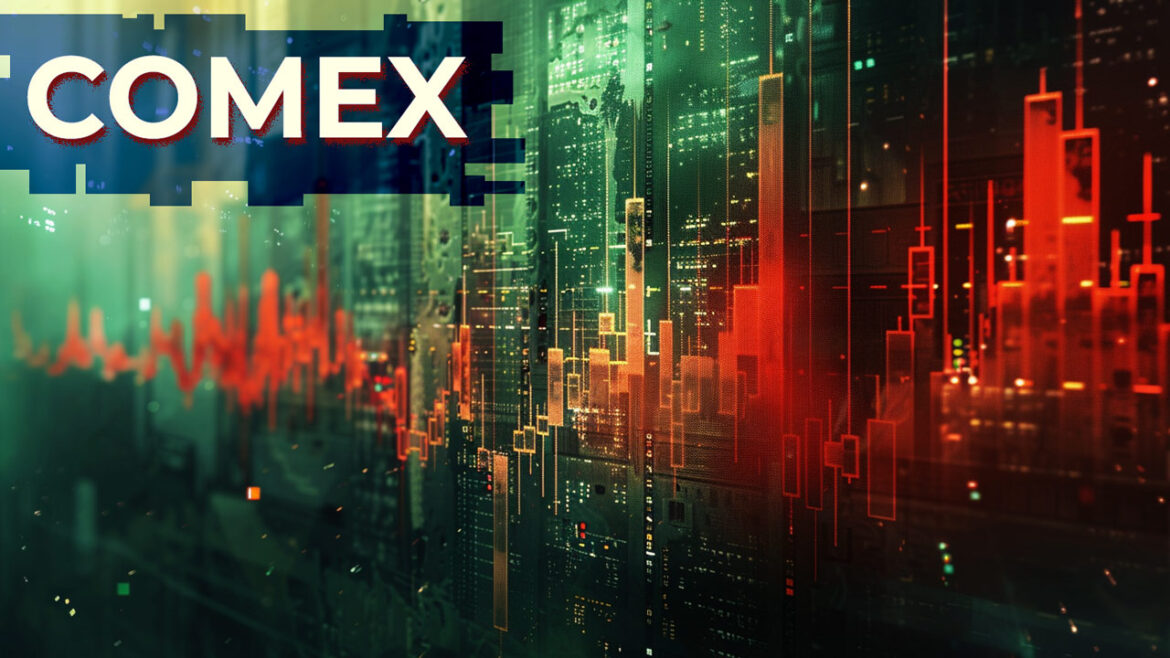Gold has all the potential to go unprecedentedly high. But silver will be gold on
Site:
Precious metals news
This time Peter tackles Jerome Powell’s speech from Wednesday, in which he announced that the Fed is holding the federal funds rate between 5.25 and 5.5%. He also briefly discusses Bitcoin’s pullback and the media’s lies about Donald Trump.
The Bank of Japan’s historic move to end the country’s negative interest rate policy after nearly two decades triggered a jolt upward to new all-time highs for gold against the yen. But what are the implications for gold in the medium and longer term? The answer is far from simple.
Central banks' increasing interest in gold, alongside anticipated Federal Reserve rate cuts, are fueling expectations for a renewed gold bull run. The combination of strong physical demand, substantial official sector purchases, and the Federal Reserve's dovish stance is predicted to push gold prices to an average of $2,250 per ounce in the next quarter and maintain an annual average of $2,113 per ounce for 2024. With traders and investors currently under-positioned in gold, the expected reduction in interest rates could boost speculative interest and ETF demand, potentially driving prices to exceed $2,300 in the coming six months. Moreover, factors such as central banks' record gold purchases, the desire to hedge against inflation and default risks, and geopolitical tensions are likely to support and even amplify the price rally.
Will 2024 be the year of the metals? Gold has just reached a fresh record high driven by strong retail demand and record central bank buying. With the prospect for rate cuts in the US later this year, further strength could lie ahead.
Incrementum is back with their latest chartbook featuring the latest gold and silver charts.
Leading asset management firm, BlackRock, warns that longer-term U.S. Treasury bonds may face risks if the Federal Reserve's anticipated interest rate cuts clash with persistent inflation. Despite the Fed's dovish stance, expecting three rate cuts this year amidst stronger economic growth, stubborn inflation could challenge this outlook. According to David Rogal of BlackRock's Fundamental Fixed Income Group, the current bond prices for intermediate and long-term maturities don't adequately account for the possibility of the Fed maintaining higher interest rates for an extended period
The dollar is on track for its second consecutive week of gains, showcasing its resilience and strength in the global currency market. This week has witnessed a significant shift in global monetary policy, with various major central banks adjusting their interest rate policies. Notably, even Japan's rate hike and Switzerland's unexpected rate cut have not slowed the dollar's ascent. These developments underscore the widening disparity in interest rate strategies between the Federal Reserve and other global central banks, further bolstering the dollar's position.
Over the past decade, Kazakhstan has significantly altered the composition of its gold and foreign exchange reserves, according to a report by LS. As of February 2024, the National Bank of Kazakhstan reported the country's total reserves at $36.1 billion, a 38.6% increase from $26.05 billion in 2014. This growth is characterized by a decrease in foreign currency assets by $4 billion and a remarkable increase in gold reserves by 3.2 times—from $6.3 billion in February 2014 to $20.01 billion in 2024.
JD and Joel discuss this week's Fed announcement. It caused new all-time highs in gold, but this all but confirms a coming inflation bloodbath. We also discuss ways the dollar can stay "strong" even amid high inflation.
 ZeroHedge: Price Inflation Accelerates for Second Month as Biden Blames "Greed"
ZeroHedge: Price Inflation Accelerates for Second Month as Biden Blames "Greed"Mar 21, 2024 - 14:00:35 PDT
The Bureau of Labor Statistics reports a continued increase in the Consumer Price Index (CPI) inflation rate, marking a 3.2% rise year over year in February. This marks the 36th consecutive month where inflation has surpassed the Federal Reserve's 2% target. Contrary to earlier predictions, the recent data suggests that the inflationary trend is not as temporary as previously thought.
The S&P 500 marked its 20th record high of the year, propelled by a surge in risk appetite among investors. Despite experiencing declines in major technology firms like Apple Inc. and Alphabet Inc., the index's overall momentum remained robust. Concurrently, the Nasdaq 100 achieved a new peak, partly thanks to a positive outlook from Micron Technology Inc. Moreover, Reddit Inc. experienced a notable surge in its market debut. This market enthusiasm comes in the wake of encouraging data across housing, manufacturing, and the labor market, suggesting a sturdy economy.
In response to staggering inflation rates of 67%, Turks are increasingly seeking refuge in the stability of the dollar, gold, and stocks, moving away from the rapidly depreciating Turkish lira. In the bustling environment of Istanbul’s Grand Bazaar, traders congregate in what's known as a “standing market,” a vibrant hub resembling a stock exchange floor, to exchange precious metals and currencies. The current economic climate has severely undermined confidence in the Turkish lira, prompting individuals like trader Adnan Kapukaya to declare the national currency as "almost worthless." This dramatic shift in preference underscores the public's loss of faith in the lira due to unrelenting inflation and their consequent pivot towards more reliable assets.
Gold prices have surged to record highs and Bank of America (BofA) Securities forecasts even further growth ahead. On Thursday, spot gold reached a new peak of $2,222.14 per ounce, while gold futures neared a record $2,224.80. This rally was fueled by the Federal Reserve's hints at possible rate cuts within the year, which weakened the U.S. dollar and, in turn, elevated gold's appeal. Over the past two years, rising interest rates had negatively impacted gold, but BofA now highlights gold as a prime investment for 2024.
The CME Comex is the Exchange where futures are traded for gold, silver, and other commodities. The CME also allows futures buyers to turn their contracts into physical metal through delivery. You can find more details on the CME here (e.g., vault types, major/minor months, delivery explanation, historical data, etc.).
Since its inception in 1986, one silver bullion coin has become one of the go-to choices for investors seeking silver assets.
 Gold Prices Have Been Hitting Record Highs — Here’s Why the Rally Is Far From Over
Gold Prices Have Been Hitting Record Highs — Here’s Why the Rally Is Far From OverMar 21, 2024 - 07:44:41 PDT
Gold's remarkable rally has propelled its prices to record highs, with the potential to climb even higher, potentially reaching $2,300 per ounce in the latter half of 2024. This optimistic outlook is buoyed by expectations of rate cuts by the U.S. Federal Reserve, according to Aakash Doshi of Citi. Currently, gold is trading at $2,203. The precious metal often becomes more attractive when interest rates fall, as it competes favorably against fixed-income assets like bonds, which offer diminished returns in a low-rate environment. Moreover, central banks' record bullion purchases and significant futures buying, as noted by Macquarie, have played a critical role in driving gold prices upward, suggesting that the rally is far from reaching its peak.
The Swiss National Bank (SNB) reduced its main interest rate by 25 basis points to 1.50%, setting a precedent as the first major central bank to reverse the trend of tightening monetary policy initiated to combat inflation. This decision, marking the SNB's first rate cut in nearly a decade, was announced under the tenure of Chairman Thomas Jordan shortly before his planned departure in September. The cut was also applied to the interest rate on sight deposits. The move came ahead of decisions by other European central banks, including the Bank of England and the Norwegian central bank, which held their rates steady, underscoring the SNB's proactive stance in adjusting monetary policy.
Gold's price climbed past $2,200 an ounce, marking a historic first propelled by investor optimism regarding the Federal Reserve's stance on interest rate cuts. This optimism has significantly bolstered the attractiveness of gold, which does not yield interest. The metal's price spiked to an all-time high of $2,220.89, reflecting a surge of over 10% since mid-February. This rally is largely attributed to anticipations of a more lenient U.S. monetary policy, enticing investors to place their bets on gold. Despite the rapid pace of this rally, the Federal Reserve's recent announcement, maintaining its plan for three rate cuts within the year and its tolerance towards the current inflation and labor market conditions, has reinforced bullish sentiments among gold traders, according to Chris Weston of Pepperstone Group Ltd.
Carley Garner, an esteemed analyst from TheStreet Pro with over two decades of experience in tracking markets through futures, including gold, has made a bold prediction about the precious metal's trajectory. Last summer, she accurately forecasted gold's impressive rally, suggesting it would surpass the $2,100 resistance level to reach new heights. Garner now updates her target, indicating that a similar upward movement could propel gold prices to as much as $2,600 per ounce. This prediction comes at a time when gold has seen a sharp increase in value, defying the expectations of many who believed it would falter amidst falling inflation and a renewed interest in stocks.
Gold prices surged to unparalleled heights for the fifth time in March, setting a new record after the U.S. Federal Reserve indicated plans for three interest rate cuts in 2024. This decision comes despite ongoing concerns about high inflation. The price of spot gold increased by 0.8% to $2,202.39 per ounce, after briefly reaching a peak of $2,222.39, while U.S. gold futures saw a 2% rise to $2,204.50. Analysts, including Julius Baer's Carsten Menke, attribute this remarkable rally to the Fed's recent remarks, which confirmed a forthcoming shift towards reducing U.S. interest rates, sparking a frenzy among investors.












